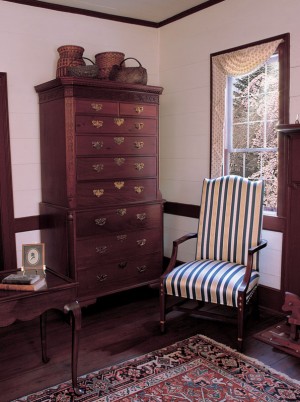The world of antiques has a vocabulary all it’s own and as those of us who travel can attest, if you are going to venture into the territory, it is best to know the language. Here are a few common terms to assist you as you maneuver your way through the world of resale.
Let’s start with the terms used to define age. “Antique” is a word that is loosely used and often a source of confusion. The word was officially defined in 1930 by the U.S. Customs Office for the purposes of collecting duty on items brought into the US. They concluded that “an antique is an item the predated mass production in the 1830’s.” Based on this conclusion we now consider an antique to be an item over 100 years old. “Vintage” items are those over 25 years old and “Retro” is the term referring to a style, fashion or design from the recent past and will, in the current market, commonly be used for furniture, clothing and other items from 1950-1970.
Two terms that are often confused are original finish and original condition. Original finish is just that. It is the finish (stain, varnish, paint or polish) the piece had the day it was made. It is very important on primitive and fine antique furniture alike to be able recognize original finish as it is one of the main factors used in determining value. When a piece has been stripped of it’s original finish it has lost part of its integrity as an antique and therefore part of it’s value.
Original condition refers to the overall state of a piece. Does it have all of it’s original drawers and doors? Is all the hardware original? Has the patina been disturbed? Has the piece been stabilized over the years by the addition of inappropriate wood? If anything has been removed or replaced, the piece will be of lesser value than it’s original condition counterpart.
Eames Era — Charles and Ray Eames were a husband and wife designing team best known for creating the Eames Lounge Chair. As a result of their historic contribution to Mid-Century American furniture design, furniture and home decor from 1940-1970 is often referred to as being from the “Eames Era.”
Patina — The coloration of a piece that can only be developed with the passage of time. It can be the result of dirt, grease, wear, or temperature and chemical changes. Patina is what gives an item character and beauty.
Circa — An estimated time frame or era of origin. It is commonly accepted that this allows a ten year grace period either way.
Chenille — A velvety cotton, silk or wool fabric with a protruding pile; 1950s bedspreads were often made of chenille.
Dowel — A cylinder shaped rod that fits into a hole on an adjacent piece of furniture, thus holding the two pieces together. You will commonly find dowel construction on chairs made before 1940.
Electroplate — This chemical process, developed in 1840, is when a base metal is covered with a thin layer of another, more desirable metal. You will commonly find this on jewelry, flatware and serving pieces.
Fake — An object made with the intent of misleading the buyer into thinking an object is authentic. This is not to be confused with the term reproduction which refers to a more recent copy of an older item. Unlike a reproduction, a fake is a piece for which there is no “original” counterpart.
Don’t let your limited vocabulary spoil the fun of shopping. Familiarization with some of the basic terms that apply to your field of interest can be helpful, but much of what you need to know, you will learn as you go. Until next time . . . . Linda
Irvington resident Linda Kennett is a professional estate liquidation consultant specializing in down-sizing for seniors and the valuation of antiques and household content and may be reached at 317-258-7835 or lkennett@indy.rr.com



